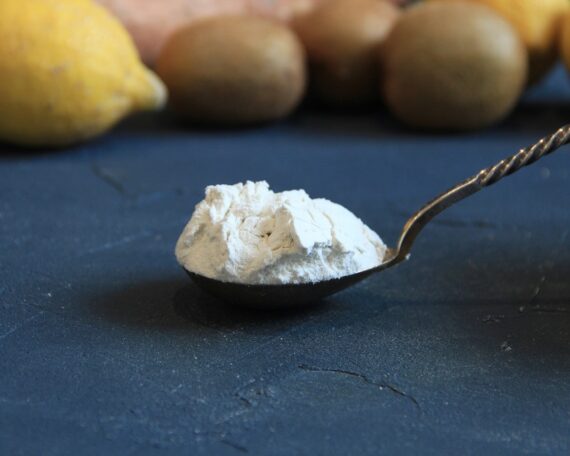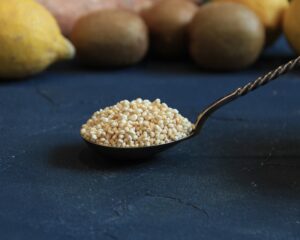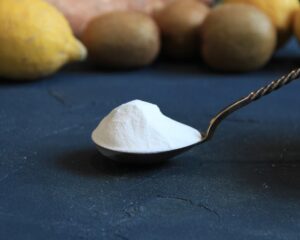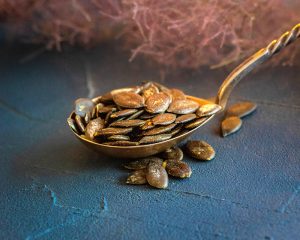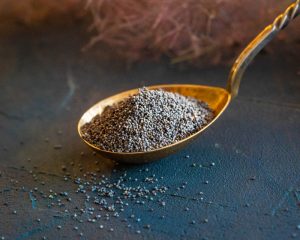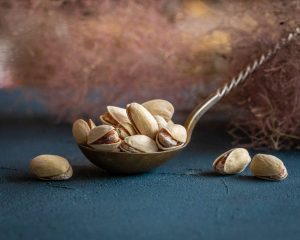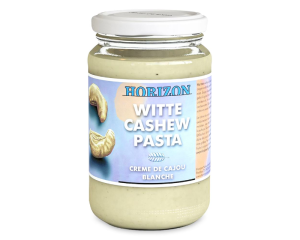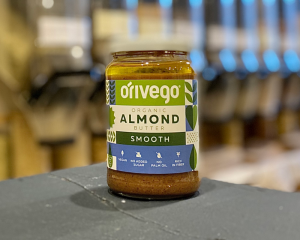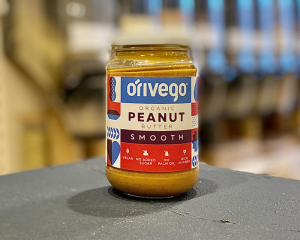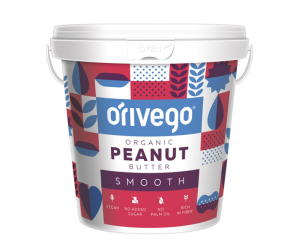Organic guar gum
From 1.60€
Guar gum is extracted from the seeds of the guar plant Cyamopsis tetragonoloba, native to India and Pakistan.
Guar gum is similar in properties to locust bean gum (made from locust bean powder). Like guar gum, this powder is made from the endosperm of legume seeds. However, there are differences between the two species. Guar gum dissolves quickly in room temperature water, while locust bean gum needs to be heated to about 85°C to dissolve well.
To avoid confusion, let us remind you that the much-loved “chocolate” carob powder is made from carob pods, while carob resin is made from carob seeds.
Guar gum is a natural thickener and stabiliser (E412) widely used in the food, pharmaceutical and cosmetics industries.
The production process of guar gum consists of several steps!
The guar plant is cultivated for its seeds. When the plant matures, the pods containing the seeds are harvested.
The harvested pods are sculpted, thus separating them from the plant. The seeds are then cleaned to remove any dirt or debris.
The purified guar seeds are split into two parts, known as the endosperm. Endosperms are rich in galactomannan, the polysaccharide that makes up the bulk of guar gum.
The endosperm is ground into a fine powder using specialised equipment. This process helps to produce galactomannan.
Mix the crushed powder with water to form a slurry. The galactomannan in the powder starts to swell.
The hydrated suspension is then mechanically separated to separate the galactomannan from the insoluble parts of the seeds.
The separated galactomannan is dried to obtain the final product, guar gum.
Benefits of organic guar gum
Digestion. Guar gum is a soluble fibre that can help improve digestion. When taken, they form a gel-like substance in the intestine that promotes regular bowel movements and prevents constipation. Studies have shown that guar gum can help reduce symptoms of irritable bowel syndrome (IBS) and improve overall bowel function.
Blood sugar regulation. For people with diabetes or insulin resistance, organic guar gum may be useful for regulating blood sugar levels. The fibre content of guar gum slows the absorption of carbohydrates, which improves glycaemic control after meals.
Cholesterol regulation. Studies have shown that organic guar gum can help reduce LDL cholesterol, or ‘bad’ cholesterol, which is linked to an increased risk of heart disease. Its ability to bind to bile acids in the intestine helps reduce cholesterol absorption.
Attention!
Although organic guar gum is safe for most people, excessive consumption can cause side effects such as bloating, gas and abdominal discomfort.
It is very important to use guar gum in moderation and to take individual needs into account.
Use
Guar gum improves the texture and volume of breads, cakes and pastries, thus improving quality and giving a longer shelf life.
Guar gum is commonly used in herbal milk and yoghurt products to achieve a creamy consistency and prevent separation of ingredients.
Guar gum is an excellent thickener for sauces, creating a smooth texture.
It is also used in desserts and ice cream.
Guar gum can be used as a gelatine substitute with a neutral taste and smell.
Recommended for use
For warm dishes (sauces, stews, puddings) – use 1-3 teaspoons of powder per 1 litre of liquid.
For cold dishes (salad dressings, ice creams) – use 1-2 teaspoons of powder per 1 litre of liquid.
Guar gum is safe for internal use for most people, but it is recommended not to use it for more than two years.
Pregnant women can safely use guar gum for up to 4 weeks
For those who are breastfeeding – there is not enough information to know whether guar gum is safe to use while breastfeeding.
Guar gum is safe for children from 4 years of age.
Sources
https://www.healthline.com
https://www.ncbi.nlm.nih.gov
NOTE! The information provided here should not be interpreted as advice for treatment or other health problems.
We encourage you to make decisions about your personal health by considering different sources of information.
Organic guar gum 100%
Nutritional energy 843 kJ / 209 kcal
Fat 0,6 g
- of which saturates 0,2 g
Carbohydrates 1,0 g
- of which sugars 0,9 g
Fibre 88 g
Protein 5,7 g
Salt 0 g
Store in a cool and dry place.


